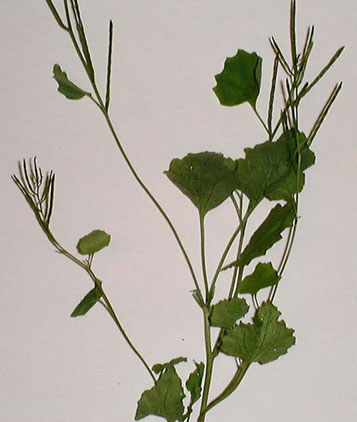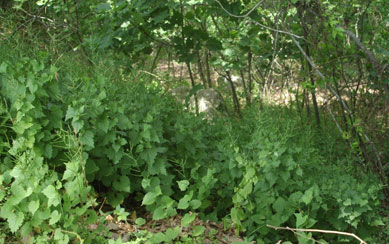Look on the ground now in Conservation areas, and you should be able to find the leaves of garlic mustard (Alliaria petiolata). An invasive herb identified by its garlic/onion smell, it was first found on Long Island in 1868, but was probably brought from Europe by settlers as a medicinal and culinary herb. By 1990 it had spread to 29 other states and was labeled an invasive, with no significant natural enemies in North America.
Garlic mustard generally grows in open woodlands, but is capable of growing in dense shade. A biennial herb, its first year produces only leaves, which overwinter as basal rosettes.
Citation – Chris Evans, River to River CWMA, Bugwood.org
In the following spring the plant produces white flowers (inflorescences) on stalks up to 3 1/2 feet tall.
Citation – Chris Evans, Bugwood.org
The seeds grow in an oblong capsule (a silique) up to 4” long and are dispersed in late summer, with each plant producing from 350 to 7900 seeds.
Citation – Tom Heutte, USDA Forest Service, Bugwood.org
Once established in an area, Garlic mustard plants outcompete native plants by monopolizing light, moisture, nutrients, soil, and space.
Citation – Chris Evans, River to River CWMA, Bugwood.org
Because of the plant’s abundance, its leaves can be used as the main ingredient in pesto, while its roots can be substituted for horseradish and its black seeds served as a condiment.




